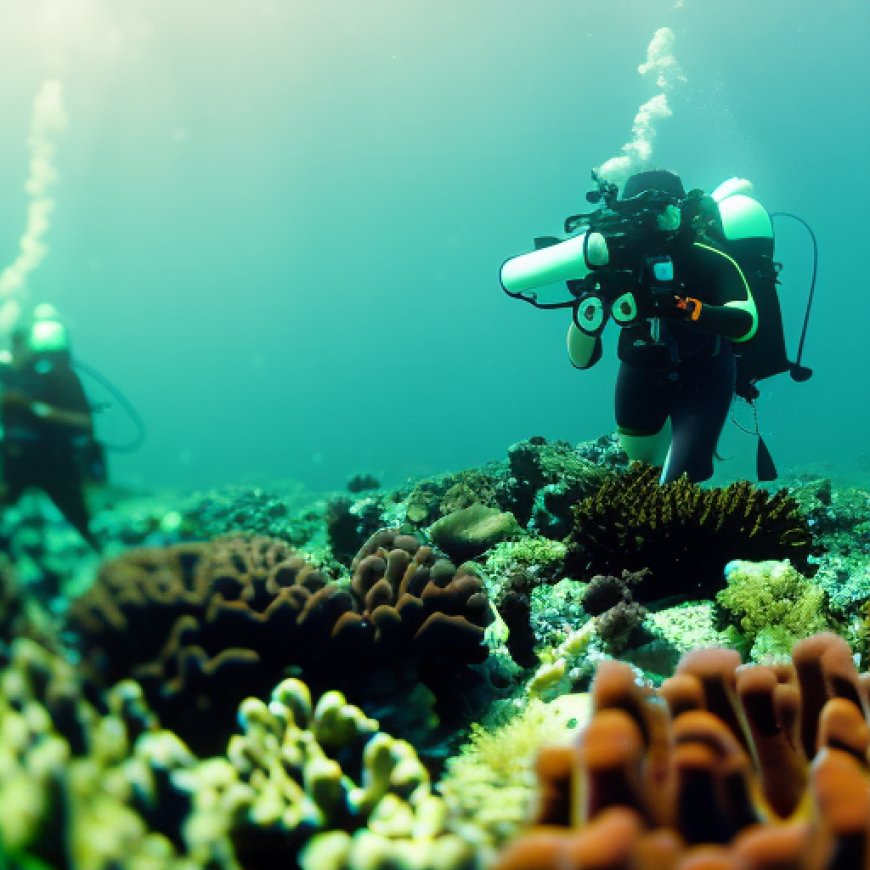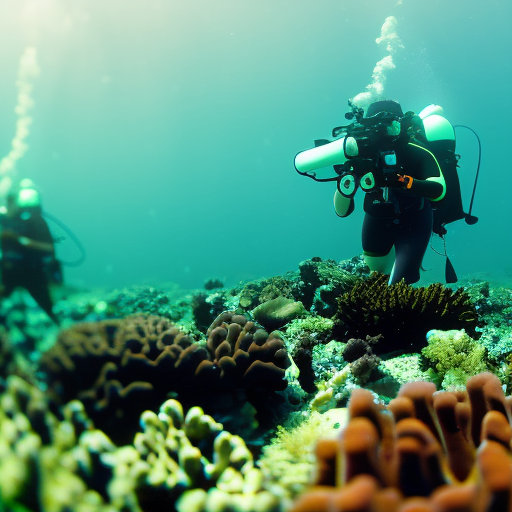Scientists fight to help protect the Florida coral that’s dying from heat
Scientists fight to help protect the Florida coral that's dying from heat Public Radio Tulsa


Rescue Operation Underway to Save Endangered Coral Species in the Florida Keys
MARY LOUISE KELLY, HOST:
In the Florida Keys, a rescue operation is underway to save endangered species of coral. Abnormally hot ocean temperatures in the Keys related to climate change have led to bleaching and a massive die-off. Marine scientists are scrambling to preserve samples of rare species of coral before, possibly, they’re gone forever. NPR’s Greg Allen reports from Miami.
Record-High Ocean Temperatures Threaten Florida’s Coral Reefs
GREG ALLEN, BYLINE: An ocean buoy operated by NOAA this week in the Florida Keys recorded a water temperature over 101 degrees Fahrenheit, among the highest reading ever recorded. That’s the temperature of many hot tubs and has led to severe problems for Florida’s already struggling coral reefs. Phanor Montoya-Maya with the Coral Restoration Foundation saw it firsthand on a dive to Sombrero Reef.
PHANOR MONTOYA-MAYA: When we jumped in the water, we found a lot of these corals – that they were white and brown, mostly white.
ALLEN: Coral bleaching isn’t unusual. It’s often a temporary condition that happens in hot summer months, and corals soon recover. But Montoya says when he examined the corals up close on Sombrero Reef, he was shocked. All of them were dead.
MONTOYA-MAYA: Which means that the coral have pretty much burned to death.
ALLEN: When corals bleach, they expel the algae that, through photosynthesis, provide their primary food source. If bleaching goes on long enough, corals can starve to death. Jennifer Moore with the Florida Keys National Marine Sanctuary says that didn’t happen in this case. The corals died quickly.
JENNIFER MOORE: We think that the temperature stress was so extreme that not only did the corals bleach, but it killed the tissue. It’s not that they starved to death after a week or two or three – in these cases, that they’re actually dying from the heat stress itself.
Preserving Coral Reefs for a Sustainable Future
ALLEN: Corals form the basis for reefs that underpin a diverse aquatic ecosystem. Reefs provide storm protection and economic benefits, adding billions of dollars to Florida’s tourist economy. This bleaching and mortality event comes as a blow to scientists who’ve been preserving and restoring Florida’s coral reefs. Working with NOAA, conservation and research groups have been raising and out-planning endangered coral species, part of a project called Mission Iconic Reefs. Now those groups are rushing to preserve their underwater nurseries, moving them in some cases onto land or to deeper, cooler water. And Moore says there’s an urgent new mission underway – taking samples of two important species, elkhorn and staghorn corals.
MOORE: On the Florida reef track, there are around 150 unique individuals of elkhorn coral still alive and about 300 of staghorn corals still alive. That’s less than 1% of their former abundance.
ALLEN: Those fragments will be warehoused on land, part of a Noah’s Ark of coral species that research groups have created as a hedge against what appears to be an increasingly bleak future. Moore says it’s uncertain what all this means for the Mission Iconic Reefs project. The first step is understanding what’s happening on the reefs. The death of all of the coral on Sombrero Reef is a severe setback to the restoration effort. In recent years, Coral Restoration Foundation and other groups significantly expanded the coral cover there. But Phanor Montoya says this crisis is a reminder that for Florida’s coral reefs, time may be running out.
MONTOYA-MAYA: Climate change is the biggest threat to our coral reef ecosystems across the world. There is no doubt about it. And if we don’t do any action to mitigate the effects of climate change, it will be one of the first ones to go.
A Call for Action to Protect Coral Reefs
ALLEN: Unfortunately for Florida’s coral reefs, things may get worse before they get better. The hottest ocean temperatures here typically happen in August, and NOAA’s predicting hot ocean temperatures in the Keys are expected to continue through October. Greg Allen, NPR News, Miami. Transcript provided by NPR, Copyright NPR.
NPR transcripts are created on a rush deadline by an NPR contractor. This text may not be in its final form and may be updated or revised in the future. Accuracy and availability may vary. The authoritative record of NPR’s programming is the audio record.
SDGs, Targets, and Indicators
1. Which SDGs are addressed or connected to the issues highlighted in the article?
- SDG 13: Climate Action
- SDG 14: Life Below Water
The article discusses the impact of climate change on coral reefs in the Florida Keys, highlighting the rising ocean temperatures and coral bleaching. This connects to SDG 13, which focuses on taking urgent action to combat climate change and its impacts. Additionally, the article mentions the importance of coral reefs as a diverse aquatic ecosystem, which aligns with SDG 14, which aims to conserve and sustainably use the oceans, seas, and marine resources.
2. What specific targets under those SDGs can be identified based on the article’s content?
- SDG 13.2: Integrate climate change measures into national policies, strategies, and planning
- SDG 14.2: Sustainably manage and protect marine and coastal ecosystems
The article emphasizes the need for integrating climate change measures into policies and planning to address the threat to coral reefs caused by rising ocean temperatures. This aligns with SDG 13.2. Furthermore, the efforts to preserve and restore coral reefs through projects like Mission Iconic Reefs demonstrate the aim to sustainably manage and protect marine ecosystems, which corresponds to SDG 14.2.
3. Are there any indicators mentioned or implied in the article that can be used to measure progress towards the identified targets?
- Indicator 13.2.1: Number of countries that have integrated mitigation, adaptation, impact reduction, and early warning measures into national policies, strategies, and planning
- Indicator 14.2.1: Proportion of national exclusive economic zones managed using ecosystem-based approaches
The article does not explicitly mention specific indicators. However, to measure progress towards SDG 13.2, the indicator 13.2.1 can be used to track the number of countries that have integrated climate change measures into their policies and planning. For SDG 14.2, the indicator 14.2.1 can be used to assess the proportion of national exclusive economic zones managed using ecosystem-based approaches, which includes the conservation and restoration efforts for coral reefs.
4. Table: SDGs, Targets, and Indicators
| SDGs | Targets | Indicators |
|---|---|---|
| SDG 13: Climate Action | 13.2: Integrate climate change measures into national policies, strategies, and planning | 13.2.1: Number of countries that have integrated mitigation, adaptation, impact reduction, and early warning measures into national policies, strategies, and planning |
| SDG 14: Life Below Water | 14.2: Sustainably manage and protect marine and coastal ecosystems | 14.2.1: Proportion of national exclusive economic zones managed using ecosystem-based approaches |
Behold! This splendid article springs forth from the wellspring of knowledge, shaped by a wondrous proprietary AI technology that delved into a vast ocean of data, illuminating the path towards the Sustainable Development Goals. Remember that all rights are reserved by SDG Investors LLC, empowering us to champion progress together.
Source: publicradiotulsa.org

Join us, as fellow seekers of change, on a transformative journey at https://sdgtalks.ai/welcome, where you can become a member and actively contribute to shaping a brighter future.







